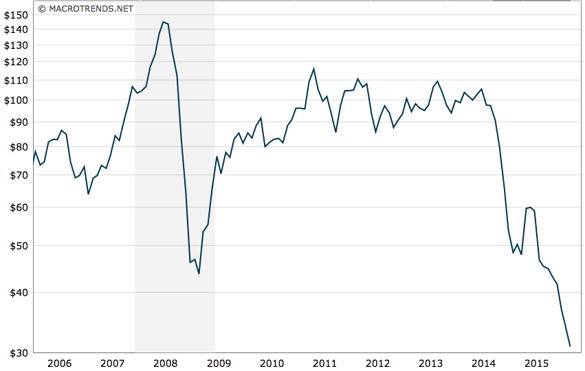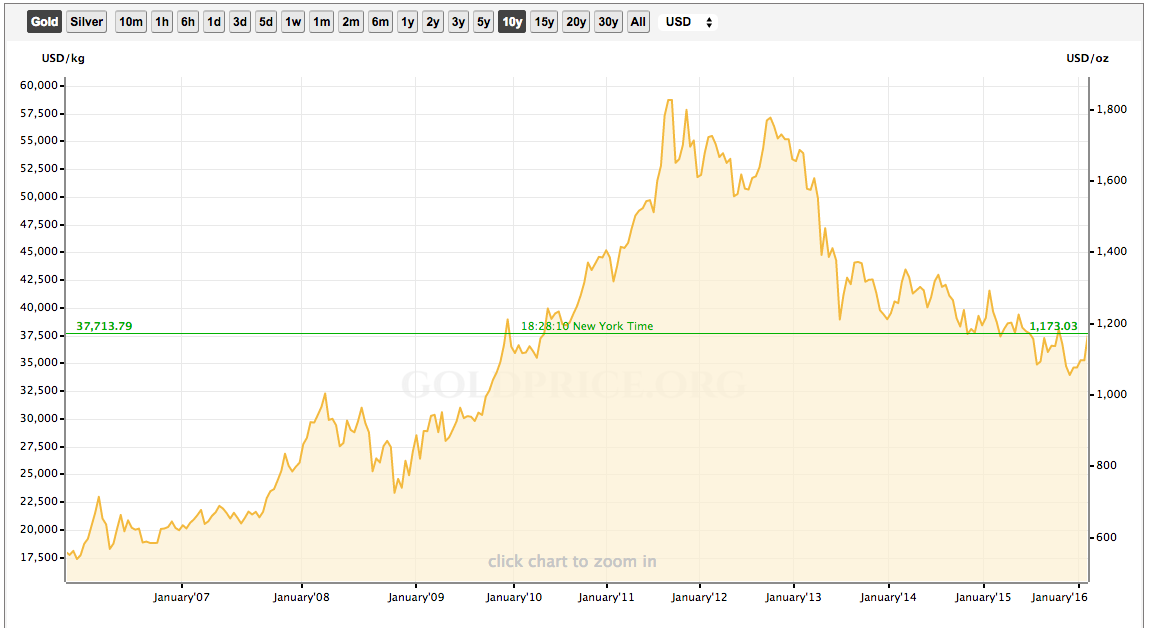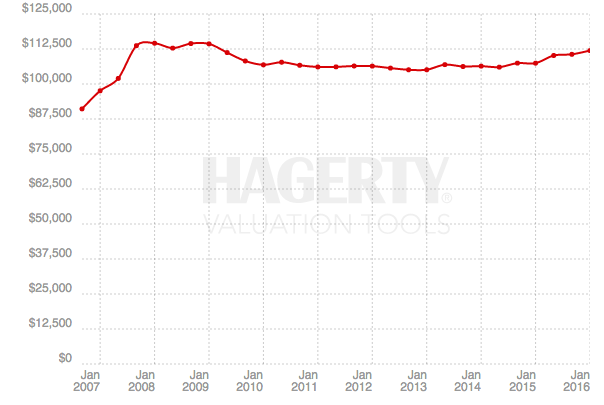Investing has long been used as a means of diversifying wealth. While an erratic stock market is nothing new, recent volatility in stocks both domestically and abroad have propelled savvy investors to seek other arenas for growing their wealth. Alternative investing has become an increasingly attractive option for these investors who are looking to move their investments outside of standard stock market trading.

Options in Alternative Investments
So how do alternative investments stack up versus traditional investing in stock markets such as the New York Stock Exchange or the Nasdaq? With a wide-range of investment opportunities, comparing markets can sometimes be likened to comparing apples and oranges. Examining the numbers and percentages can clear away some of the confusion and give investors a straightforward vantage point on where to hedge their next bet.
Stock Market

Graph Courtesy of Macrotrends.net
The Dow Jones Industrial Average (DJIA) is a weighted average of 30 notable stocks that are traded in the Nasdaq and the New York Stock Exchange. The DJIA is considered to show a representation of the market as a whole and it kicked off 2016 with an ominous drop. Many market analysts speculate that January is often a sign of what is to come and if this reigns true, 2016's outlook is bleak.
Over the last 10 years, the DJIA has varied significantly from year-to-year. Compared to 2006, the market is up 50%. The impact of the financial crisis of 2008 has had a lasting impact from which the market has taken years to recover. The complexity of investing in stocks exceeds simply overcoming the market averages. With such a wide array of companies to choose from, each individual stock can send investors on a warring roller coaster ride of peaks and plummets. A sure thing in the stock market is hard to come upon, and sometimes harder to afford.
Oil

Graph Courtesy of Macrotrends.net
No alternative investment gets more news coverage than oil. The commodity's value has a far-reaching affect, from blue collar to white. While the everyday Joe may love seeing oil prices fall, thus lessening their cost at the pump, investors cringe to see the steady decline of what was once known as liquid gold.
2016 began with oil prices at their lowest point since the financial crisis of 2008. Over the last 10 years, oil values have fallen more than 50%. As the global perspective shifts to more sustainable options, the oil industry's glory days seem a thing of the past. Some financial analysts still believe that oil values will rebound, but few seem to be suggest that now is a time for investing.
Gold

Graph Courtesy of Goldprices.org
Gold is widely considered the grandfather of alternative investments, with its roots going back long before all other areas of investing. But with the value of gold over the last 10 years seeming to be in an unpredictable flux, many investors are questioning the old adage that it is "worth its weight in gold."
Some financial analysts take issue with the fact that gold does not offer compounding returns, thus limiting the potential for future earnings on profit. The value of gold is up nearly 100% over 2006, however it has been in a steady decline, down more than 40% from where it was at its highest in 2011. With these remarkable swings in just a short period of time, investors have been understandably cautious to keep or put new wealth in gold.
Classic Cars

Graph Courtesy of Hagerty.com
Classic cars are seen as more than just an investment for many wealthy owners. Over the last ten years, these functional "passion" investments have seen increasing values slow to a halt. While there are many different avenues of investments in the automotive world, the overall market for classic auto investing has seen a marginal increase of 2-5% over the last ten years.
Other examples of so-called passion alternative investments are art, wine, and antiques. This area of investing is frequently classified as high risk. To those who invest in these items, the risk is lessened by their beauty, functionality, or sentimental value. It is unlikely that many investment managers would suggest plunking down your nest egg in this area.
Pink Diamonds

Graph Courtesy of Leibish.com
Pink Diamonds have seen an incredible growth in value over the last ten years. Since 2006, pink diamond value has increased a whopping 375%. This is an encouraging statistic, but perhaps more heartening for pink diamond investors in the steady, continued growth experienced in this market.
The colored diamond market as a whole has seen a surge in popularity within recent years. This growth can be attributed to many factors, not least of which is a textbook example of supply and demand. Colored diamonds are very rare, with certain shades like red and pink diamonds comprising less than 1% of all diamonds found. The Argyle Diamond mine, which produces 95% of all pink diamonds, has publicly stated that the mine will likely close within the next 10 years. With an end in sight, the demand of these spectacular diamonds is increasing nearly as fast as their value.
Be sure to check out the latest version of this post from 2017 here.
For more reading on alternative investments, click the links below:

